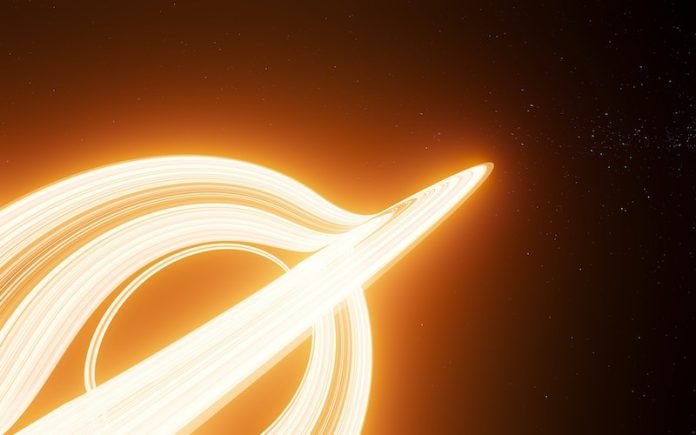
Astronomers recently discovered a long and narrow structure of stars formed eight thousand million years ago using the Hubble Space Telescope.
The trail is about the same size as the Milky Way and has been the subject of intense speculation about its origin.
Controversial Hypothesis: Result of a Supermassive Black Hole
One initial hypothesis suggested that the trail of stars might be the result of a supermassive black hole passing through a large cloud of gas.
This idea was intriguing but required a set of complex and exceptional circumstances. Since then, several scientific teams have explored alternative scenarios to explain the observations.
New Hypothesis: Edge-On Galaxy without a Bulge
In a recent study published in Astronomy & Astrophysics, researchers from the Instituto de Astrofísica de Canarias (IAC) proposed that the structure of stars could be an edge-on galaxy without a bulge.
These types of galaxies, also known as thin or flat galaxies, are relatively common.
Similarity with Local Galaxy without a Bulge
To support this hypothesis, the team compared the mysterious star structure with a well-known local galaxy without a bulge, called IC5249.
They found that the motions, size, and quantity of stars in the trail were similar to those in IC5249.
“It’s a relief to have found the solution to this mystery; the new proposed scenario is much simpler,” said Jorge Sanchez Almeida, the first author of the study.
“In one sense it is also a pity, because the existence of fleeing black holes is expected, and this could have been the first one to be observed.”
Large and Distant Galaxy
The researchers also looked at the relation between the mass of the assumed galaxy and its maximum velocity of rotation and found that the star structure behaved like a galaxy.
“It is an interesting object, because it is quite a large galaxy at a very large distance from Earth, where the majority of the galaxies are smaller,” said Ignacio Trujillo, an IAC researcher who participated in the study.
Upcoming Observations
Further observations will allow scientists to study this object in greater detail, providing more information about its origin and properties.
The study was published in Astronomy & Astrophysics.
Copyright © 2023 Knowridge Science Report. All rights reserved.



